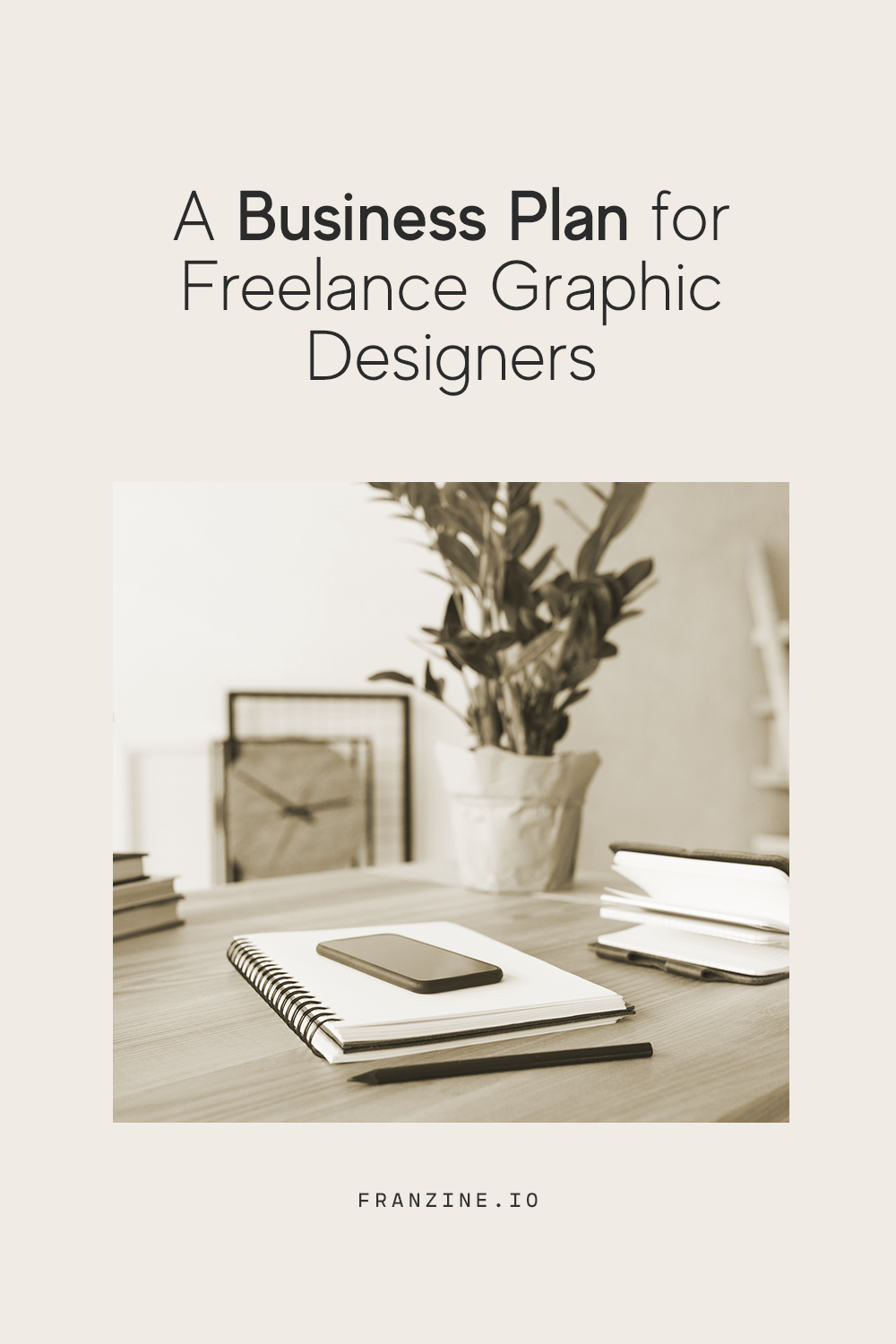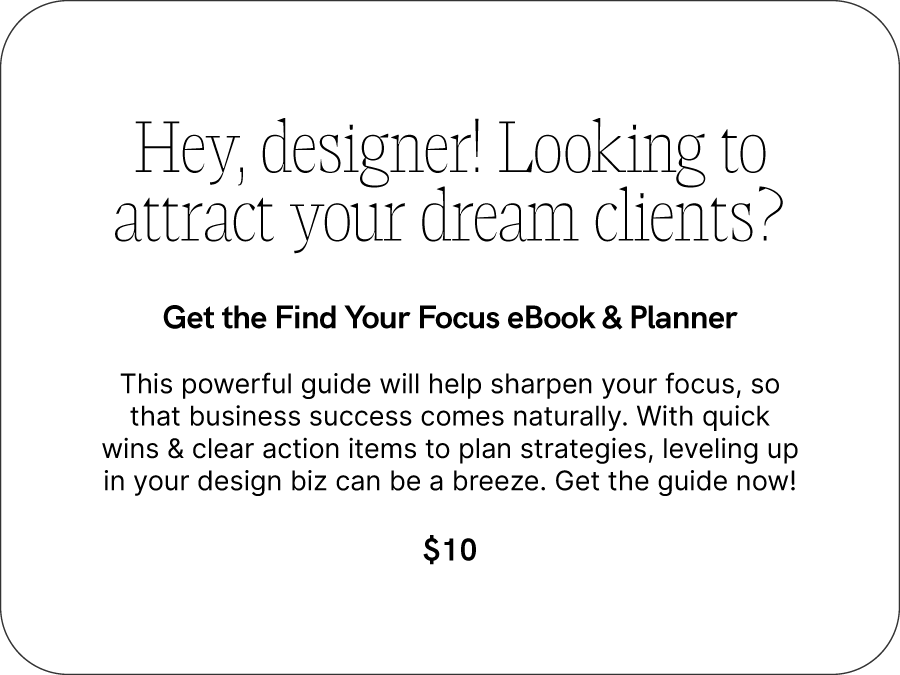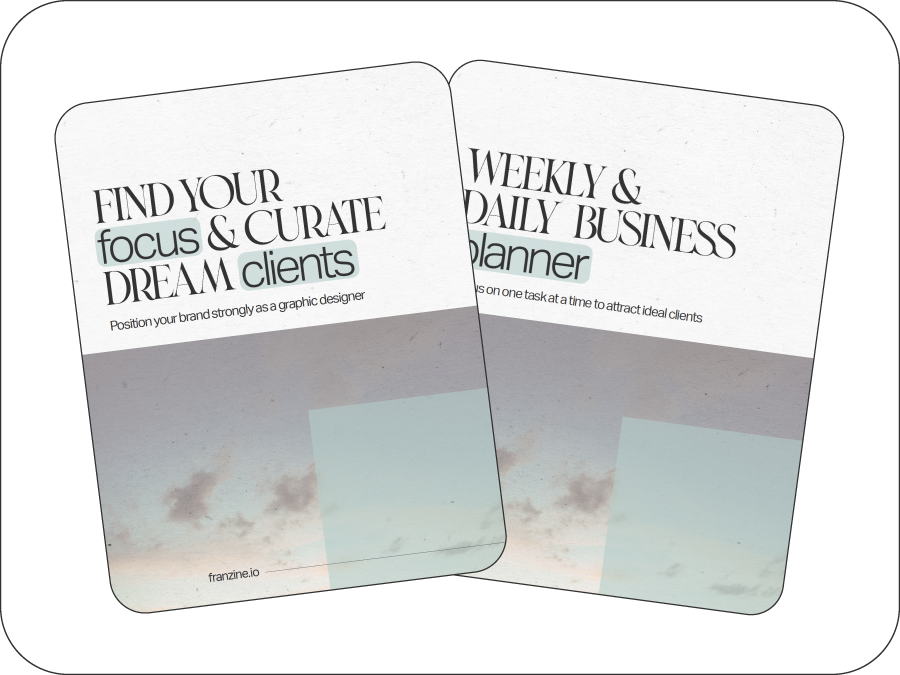A Business Plan for Freelance Graphic Designers

There were so many times in my business that I just stopped in my tracks. I was working on something for so long, like a client project, that when I was done I almost didn’t know what was next. I was missing a small business plan that really worked for me.
The ironic thing about freezing up and not knowing what to do is that we most likely have a long list already made. And that list has all of the good intentions to grow your business. However, the priorities are a little blurred when there is so much busyness all around.
I love using project management software for my business (Asana and Notion). I always had a section on there to brainstorm ideas. But oftentimes they would just stay there and never go anywhere. And when I would finally get around to looking at it, I’d close the window!
In those times, I’m running around like a headless chicken trying to figure out my next step. I learned from school and also from a few resources about how to make a formal business plan. It was very daunting, structured, and a little hard to follow.
I think the reason for that is small business plans are different for solo entrepreneurs and designers. We constantly have to be moving and thinking on our feet. The best thing to do is to create a more flexible business plan that actually makes sense for a graphic designer.
Regularly ask yourself what you want for your graphic design business
My assumption is that most of us are not asking ourselves questions often enough. We evolve as business owners and as people. We go through phases of life or struggles, and suddenly those things that were once important aren’t anymore. And we may have redefined values.
Because we are always changing, it should be a regular practice to ask yourself what you want. First of all, do you like what you’re doing? Are you in the right headspace? Is it good for your mental health? Is it helping with creativity? Is it healthy for your relationships?
It’s crucial to audit your business in terms of your lifestyle. The goal of having a design business should be to enhance your life based on your definitions of that. Check on yourself every quarter and make sure everything is in alignment.
Add short and long-term goals to the small business plan
I know some people like to ask you what your 5 and 10-year goals are. It really depends on how you like to imagine these things. For me, I have a vision of what I’d like my future self to be, but it’s really hard to see that far out.
If you’re able to do so, envisioning your life that far ahead is a great skill, and you can write all of that down. But if you can’t, don’t fret. Because sometimes the short-term goals are just as good and helpful for your business.
Annual business plan
Start with an annual plan and then work backward. I tend to be on the more conservative and practical side and often don’t practice dreaming big. But don’t be like me!
You should absolutely be stretching your goals to something you can’t even imagine right now. list out these items and you can add or remove them to your liking:
- Annual income
- Number of clients
- Type of clients
- Average price of services
- Types/streams of income
- Number of hours worked (broken up by week)
- Vacation
- Relationships
- Hobbies
- Health
- Lifestyle
I kept it pretty broad because I want you to interpret this in a way that makes sense for you. Write down what excites you and figure out how you can make your design business support these things. Besides being a long-term plan, this is really a mindset exercise to get you to start thinking of your business working for you.
Your mission and vision
I love creating an annual plan first because it can manifest what I want in life. I can see from here what my true priorities are, and it is easier to figure out my vision. You’ve written out what’s most important to you and your ambition to accomplish it.
You know what kind of service is you want to offer and who you want to help. That right there is your mission.
Put it at the top of your business plan so you can be reminded of it. It will help you not stray too far if you’re feeling that shiny object syndrome.
Weekly + monthly plan
You can now break up your annual plan to come up with your weekly and monthly plans. What do you need to do in order to reach your goals this month? How can you divide that by the weeks?
Create an Asana board (or any other project management tool. Google Sheets or Airtable work really well too), and break up your workweek.
Categorize and prioritize your small business plan by timeline
It’s time to categorize these into more digestible tasks. If you want two large clients a month, you have to figure out who these clients could potentially be and where you can find them.
So maybe in this case your ideal clients are on Instagram. Now you have to come up with an Instagram strategy where you put out content that attracts them. You can also message certain businesses and connect with them.
Next, add time for social media marketing and content creation in a way that helps you do it every week.
Keep your design business plan flexible
Even though you have everything written down, it doesn’t have to be rigid. Always remind yourself of your vision, and for this year that should pretty much stay the same. Your approaches to your clients and marketing will be the flexible part.
There are so many new things coming out that will help you during this time whether those are resources, software, or other tools. On the other hand, platforms are constantly changing which may make things more difficult. Adapting to the changes is what will keep your business strong as long as you keep your overall messaging consistent.
Get the 3-day email guide to writing something that feels more like you and less like you're applying to a job so you can build your personal brand

